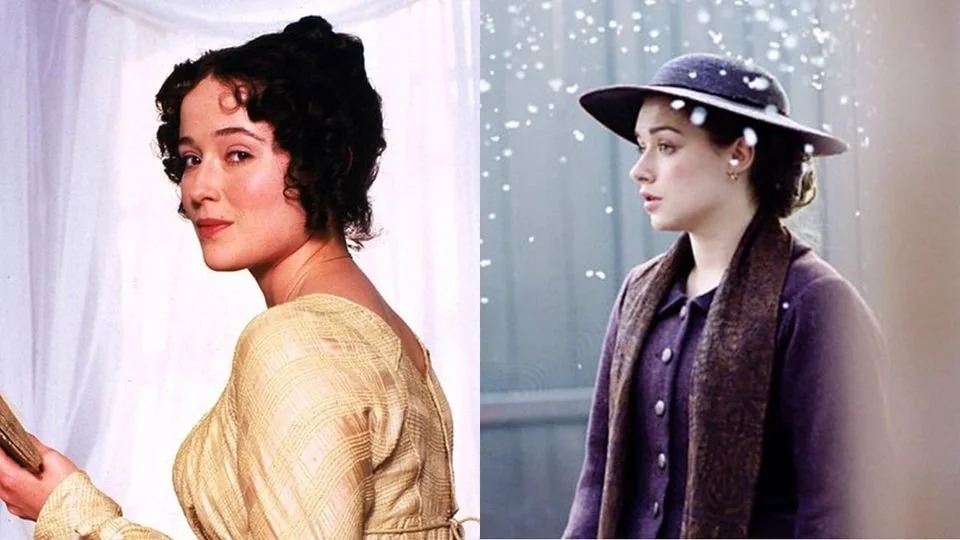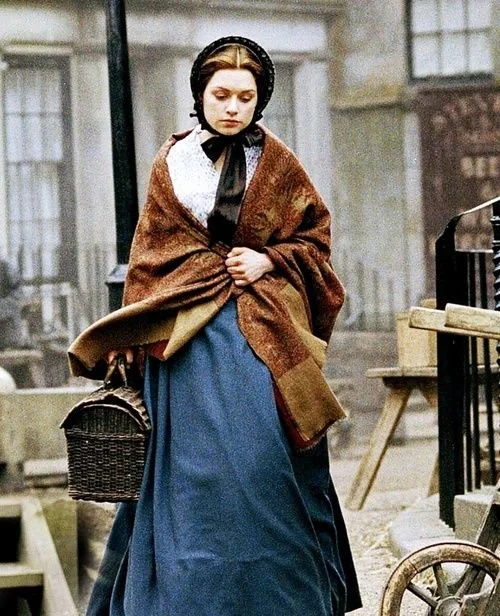I enjoyed the recent lecture event sponsored by Elizabeth Gaskell’s House and Jane Austen’s House that focused on Margaret Hale and Elizabeth Bennet. The presentation about Elizabeth Bennet pointed out several reasons why she would have been a role model of female empowerment in Austen’s time.
So to continue the conversation, I’d like to share some of the points that I took away from the talk and add a few more qualities these women expressed that make them so admirable. Here are some of the traits that make Elizabeth Bennet and Margaret Hale relevant role models then and today:
The power of ‘NO’
The first and primal point of power in both stories is that both Margaret and Lizzy have the wherewithal to reject not just one but two proposals of marriage: one conveniently comfortable and the other overwhelmingly advantageous. Both of them reject the catch of the county! And they both reject a moderately comfortable proposal of marriage received before that.
How courageously bold it was for these particular women of modest means to say “no” to an opportunity that reasonable persons of the day would assume they should be grateful for!
Self-determination
So why did they reject such tempting offers of security and comfort? After all, finding a wealthy and well-respected husband would have been the aim of any young woman of the age.
The answer is that they know themselves. They know what their highest values are, and so they know the conditions which would make them content or miserable.
They refuse to subjugate their happiness by settling for any kind of loveless marriage. They’re taking charge of their own longterm happiness.
SELF-Confidence
But how dare they? What gives them the notion that they can create their own conditions in life when they are meant to obediently follow the strict patriarchal customs of their world?
Both Elizabeth Bennet and Margaret Hale are confident of their own worth as intelligent and sensible human beings. They know their own value. They don’t constantly seek approval from others, and they don’t look to others to define who they are. They rely on their own strength of character and purpose to move them through life.
With such self-assurance, they are able to make decisions that may go against the grain of society’s expectations or customs.
INDEPENDENCE
Naturally, a self-assured and confident woman has the right to do as she pleases and go where she likes within reason of her situation and surroundings.
However, Margaret was constrained to never go out walking alone while she was in London, and Caroline Bingley deemed it a type of impertinence that Elizabeth walked from Longbourn to Netherfield on her own.
“To walk three miles, or four miles, or five miles, or whatever it is, above her ankles in dirt, and alone, quite alone! what could she mean by it? It seems to me to shew an abominable sort of conceited independence…”
The concept of taking the initiative to go see her ill sister, despite the muddy weather and the distance shows a great independence of mind.
Margaret also took great freedom in Helstone and in Milton to walk alone where she liked. Visiting Bessy, she often went to the section of town where the mill workers lived, walking down alleys in which her cousin Edith would have never stepped foot.
Calm Strength in a Crisis
Both Margaret and Elizabeth showed great strength and maturity in meeting any unexpected crisis. Elizabeth has had to endure her mother’s almost daily rants for years, so when the real crisis of Lydia’s running away comes upon the family, she’s able to keep her head and not fall into hysterics.
Margaret shows extraordinary strength and calm in the succession of unimaginable upheavals and deaths that happen in a span of three years. She does have moments when she breaks downs—even faints dead away—but for the most part she soldiers on despite practically every conceivable difficulty and loss.
Concern for Others
One of the reasons they are able to stay calm and strong is because they know that others depend upon their help. Elizabeth does all in her power to help Jane and even her foolish sister, Lydia. Lizzy loves her family, despite their faults.
Margaret is a tower of strength for her parents. She wants to help Bessy, her brother, and the starving workers. She exhibits a sincere caring for those around her. It gives her purpose to be helping others.
Aware and Alert
In order to be of any help, you first need to be aware of the situation of others. Margaret tries to learn and expand her understanding of the world around her in Milton. She’s interested in hearing the experiences of the poor workers and the ideas of the rich manufacturers.
Elizabeth is also very intelligent and observant. She pays attention to everything that is going on around her and often perceives the motives behind the behavior of others.
PERCEPTIVE OF THEIR OWN FAULTS
Of course, Elizabeth and Margaret are not always keenly aware of what’s really going on. They most definitely have their prejudices and blindspots.
But when they do come to realize that they have judged in error, they are able to acknowledge their mistaken perspective and change their minds.
Although it’s an uncomfortable awakening, here is Margaret’s reaction when she realizes Mr. Thornton has saved her from the police inquest:
Mr. Thornton, above all people, on whom she had looked down from her imaginary heights till now! She suddenly found herself at his feet, and was strangely distressed at her fall.
Not Intimidated
One of the greatest scenes in Pride and Prejudice is the dramatic confrontation between Elizabeth Bennet and Lady Catherine de Bourgh. Although Lady Catherine acts as a sovereign superior in every manner and situation, Elizabeth refuses to be subjugated by the ridiculous and rather vicious warnings of Lady Catherine to stay away from her nephew, Mr. Darcy. It’s a fantastic fireworks show of self-confidence, amazing poise, and self-determination on Lizzy’s part—all in one scene!
Margaret also faces a rather haughty attack on her character by the stern and commanding Mrs. Thornton. And likewise, Margaret refuses to be subjected to false accusations against her character and swiftly leaves the steely matron quite nonplused after their brief interaction.
“What must you think of me, madam?” asked Margaret, throwing her head back with proud disdain, till her throat curved outward like a swan’s. “You can say nothing more, Mrs Thornton. I decline every attempt to justify myself for anything. You must allow me to leave the room.”
And she swept out of it with the noiseless grace of an offended princess. Mrs. Thornton had quite enough of natural humour to make her feel the ludicrousness of the position in which she was left. There was nothing for it but to show herself out.
I’m sure there are more traits or qualities which make these two literary heroines great role models for women — or anybody! What do you love most about these fabulous ladies and their spirited power?
And don’t forget to check out upcoming online events at Gaskell’s House. This year their focus is on North and South!



